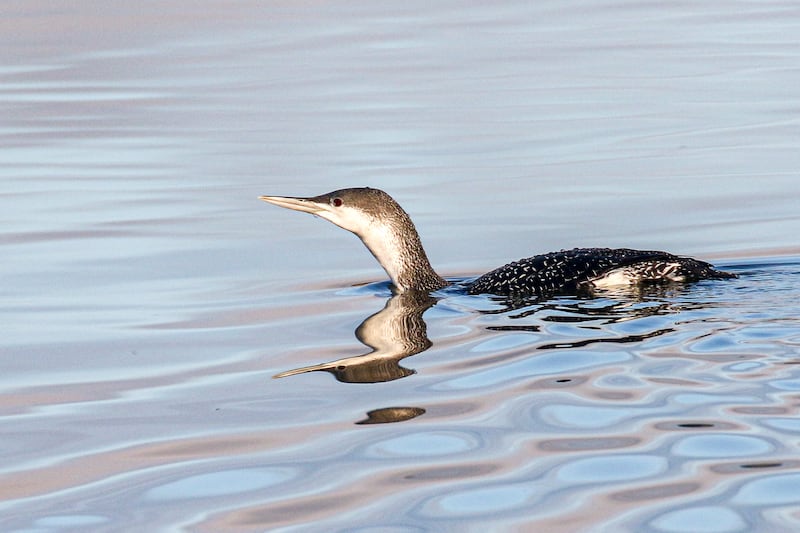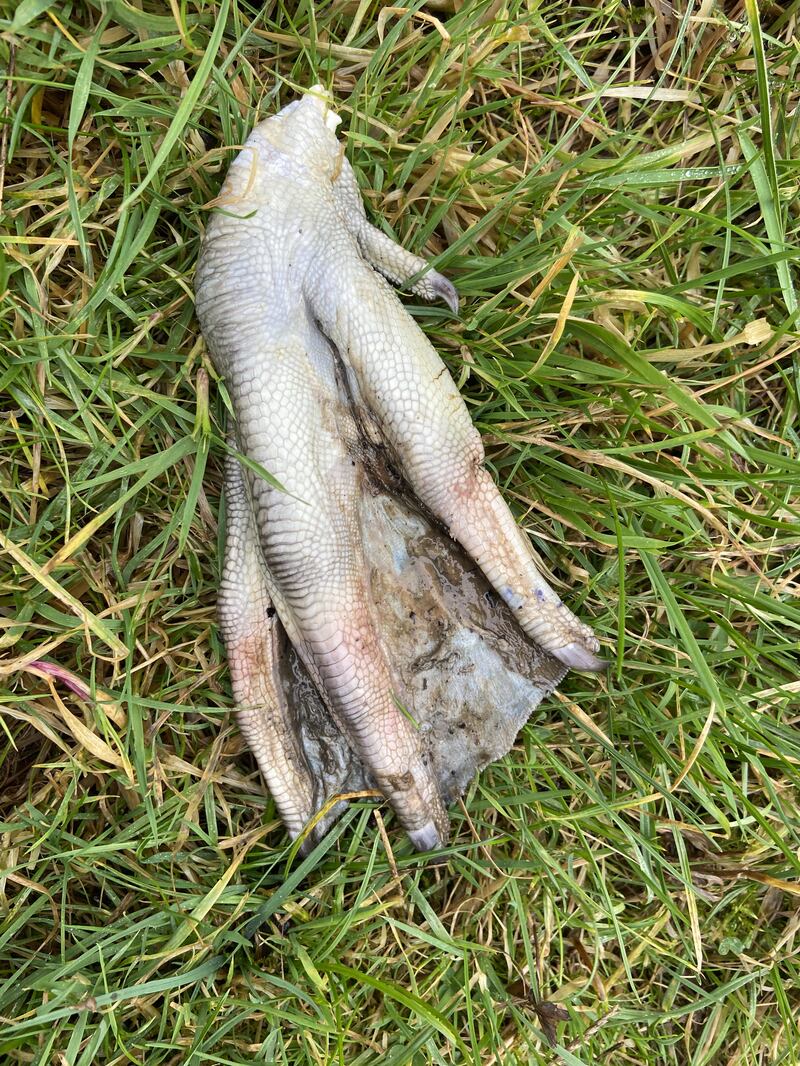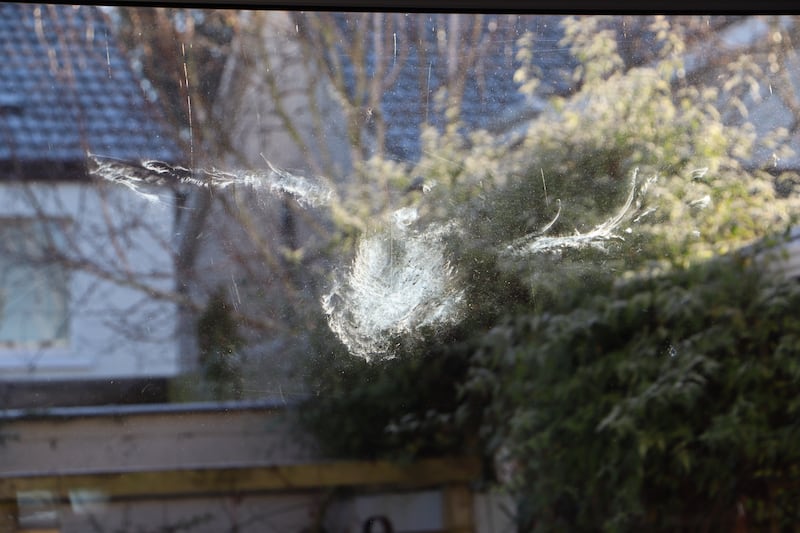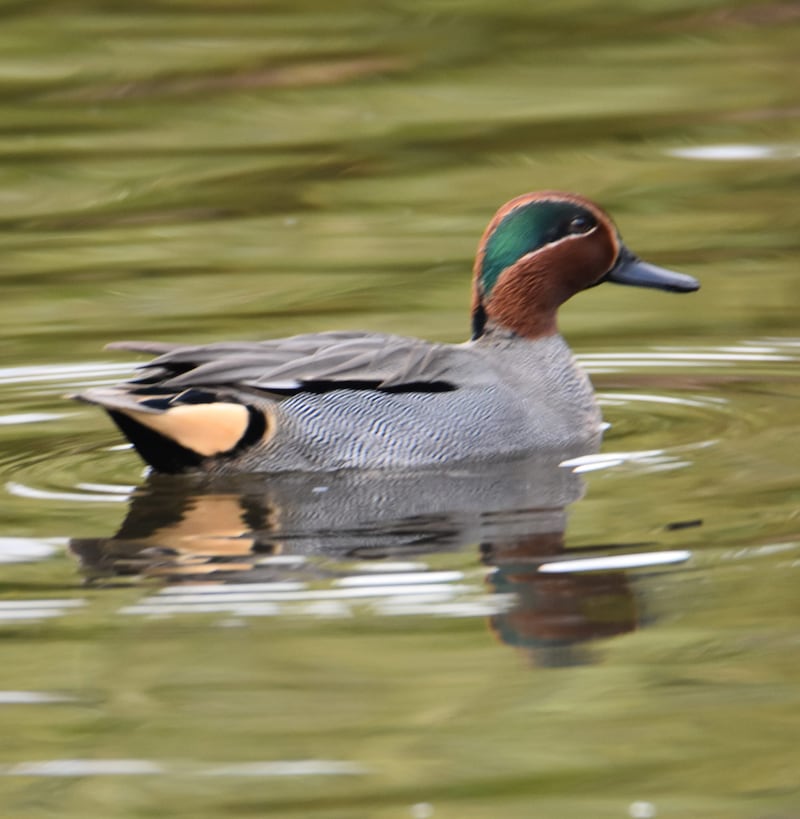While strolling with our grandson Ollie (11) on Carne Beach in Wexford before Christmas, he spotted this rock which, to his surprise, appeared to contain a fossil (of a dinosaur, he would love to think). Is it really? Paul Cousins, Co Wexford
Sadly not, alas. The rock is granite – an igneous rock that was formed when magma, which is molten material that occurs far below the earth’s surface, cooled and hardened. It only becomes exposed when the rocks covering it are eroded away. Limestone, mudstones and slates, which are all sedimentary rocks formed in layers at the bottom of oceans, are the ones to examine for fossils.

After seven years of bird photography in my local patch – Broadmeadows Estuary – this is a first sighting for me: a Red-throated Diver swimming up the channel on a beautiful January day. Victor Garland, Co Dublin
This is indeed a Red-throated Diver in winter plumage, lacking its diagnostic red throat patch that it sports in summer. Fewer of these are recorded overwintering than the larger Great Northern Diver, but the grey rather than black crown and nape, and also the fine white spots on the upperparts of its plumage, definitely confirm the identification. A few Red-throated Divers breed each year in Donegal, but they mainly breed in Scotland, Iceland and Scandinavia.
READ MORE

I came across this creature lying in the grass in a field beside Lough Sheelin. What is it? Is it some sort of fish dropped by a bird? John McEvoy, Co Cavan
It looked to me like the webbed foot of a waterbird and, sure enough, some days later John reported back. I now realise it is in all probability a swan’s foot. This is reinforced by the fact that a neighbour discovered a dead swan in nearby fields, says John. Swans feed by dabbling on the surface and have webs between the three front toes which increases the area of the foot for swimming. It is folded on the forward stroke and flat on the back stroke for smooth propulsion. Swans do not pedal furiously underwater.

In your reply to a recent reader’s query, you referred to a field mouse as being our “other” mouse species, implying there are only two species here. It may not yet be very widely spread, but the enclosed photo of a dormouse taken recently near my home in Co Kildare, where they are regularly seen, doesn’t support that view, perhaps? Peter McIlwaine, Co Kildare
The hazel dormouse was first recorded in Co Kildare in 2010. Subsequent DNA studies showed that it was more closely related to French dormice than to those that occur in Britain. It is a nocturnal, arboreal species that lives in deciduous woodland and thick hedgerows. It feeds on tree flowers, caterpillars, nuts, seeds and berries, and hibernates from October till March. It is only recorded so far for a small area in Co Kildare. The original introduction is thought to have come here around 2007 in hay or in the horsebox of whoever took the horse to France.

After a brief stand-off, I watched as one of the two wood pigeons flew into the back window. It survived and left this image created by well-oiled healthy plumage. Frank Curran, Co Kildare
This ghostly image was created by the oily dust known as powder down, a substance that protects the growing feathers of the bird.

Head gardener Marty McDonald took this picture of a teal on the lake in Druids Glen golf resort in Wicklow.
Please submit your nature query, observation, or photo with a location, via www.irishtimes.com/eyeonnature













